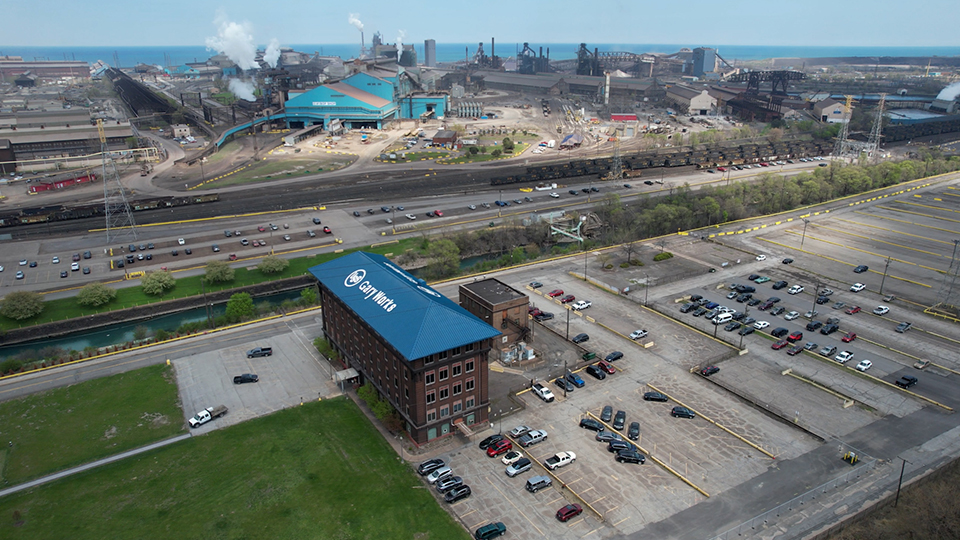U.S. Steel on verge of being absorbed as industry consolidates
Subscriber Benefit
As a subscriber you can listen to articles at work, in the car, or while you work out. Subscribe Now
With two bidders revealed in a matter of days and more in the wings, United States Steel Corp.—a symbol of American industrialization that for more than a century helped build everything from the United Nations building in New York City to the New Orleans Superdome—appears be on the cusp of being absorbed.
The company employs about 4,000 workers in Indiana at multiple plants, including the Gary Works, which has spent much of its 117-year existence as the world’s largest steel mill.
Here’s what’s happened so far, and how the acquisition of U.S. Steel could reshape steelmaking globally.
BIDDING WAR
After rejecting a $7.3 billion buyout proposal from rival Cleveland-Cliffs on Sunday, U.S. Steel said it was considering its next move. On Monday, industrial conglomerate Esmark offered $7.8 billion for the Pittsburgh steelmaker.
Shares of U.S. Steel soared more than 30% Monday with good odds that bids for the 122-year-old steel producer will head higher.
U.S. Steel says it has other offers to consider as well, and the company gave no timeline for if and when it might make any decision about selling itself.
A POTENTIAL GIANT
Cleveland-Cliffs said its proposal, first made on July 28, would create a company that would be among the 10 biggest steelmakers in the world and one of the top four outside of China, which dominates global steel production. Cleveland-Cliffs CEO Lourenco Goncalves said a tie-up between the two U.S. steelmakers would create “lower-cost, more innovative and stronger domestic supplier for our customers.”
Goncalves said he’s ready to continue talks with U.S. Steel despite its rejection of the company’s initial offer.
Cleveland-Cliffs is the largest producer of flat-rolled steel and iron in North America. Acquiring U.S. Steel would further shrink the number of players in the U.S. steelmaking industry, which has experienced significant consolidation in recent years, including the two steelmakers at the center of developments this week.
The proposed acquisition would give Cleveland-Cliffs control of about 50% of the domestic flat steel market and 100% of blast furnace production, Citi analysts wrote in a note to clients. It would also create “close to a domestic monopoly” on auto body sheet steel and close to 100% of U.S. iron ore.
That will most certainly garner the interest of antitrust regulators who, under the Biden administration, have raised the bar for mergers in a number of industries. Automakers and other big buyers of steel will also likely push back over shrinking competition among U.S. steelmakers.
SOARING STEEL PRICES AND CONSOLIDATION
Soaring prices have helped fuel consolidation in the steel industry in this decade. Steel prices more than quadrupled near the start of the pandemic to near $2,000 per metric ton by the summer of 2021 as supply chains experienced gridlock, a symptom of surging demand for goods and the lack of anticipation of that demand.
Cleveland Cliffs acquired AK Steel in 2019 right before steel prices began to spike and within a year, it acquired ArcelorMittal USA in 2020 for $1.4 billion. U.S. Steel bought Big River Steel the following year.
Prices have settled back to around $800 per metric ton, but that remains at the top end of the spectrum for steel prices over the past six years. An extended economic rebound, particularly in the U.S, has helped keep prices for flat-rolled steel elevated.
U.S. STEEL HISTORY
U.S. Steel has been a symbol of industrialization since it was founded in 1901 by J.P. Morgan, Andrew Carnegie and others, and the domestic steel industry dominated globally before Japan, then China, became the preeminent steelmakers over the past 40 years.
The company survived the Great Depression and became an integral part of U.S. efforts in World War I and II, supplying hundreds of millions of tons of steel for planes, ships, tanks and other military gear, in addition to steel for automobiles and appliances.
During the late 1970s and early 80s—amid an energy crisis and multiple recessions—U.S. Steel cut production and spun off many of its other businesses. With oversupply and an influx of lower-priced steel imports dragging down prices into the new century, the company reorganized in 2001 and separated its energy business, which became Marathon Oil Corp.
The 64-story U.S. Steel Tower still looms over the Pittsburgh skyline, but U.S. Steel is no longer its biggest tenant. That would be UPMC, a local health system, and its name is now at the top of the tower.
GLOBAL STEEL PRODUCTION
China and Chinese companies have come to dominate global steel production. Of the nearly 2 billion tons of steel produced annually across the globe, about 54% comes from China, according to the World Steel Association.
China’s Baowu Group, a state-owned iron company based in Shanghai, churned out nearly 120 million metric tons of steel in 2021.
Cleveland-Cliffs and U.S. Steel combined that year produced almost 33 metric tons of steel, according to the World Steel Association. The combined entity would vault immediately to a top 10 steelmaker globally, but it will still be at the lower end of that list.
It would not alter the position of U.S. steelmaking as a whole, of course, which current ranks No. 4 behind China, India and Japan.
